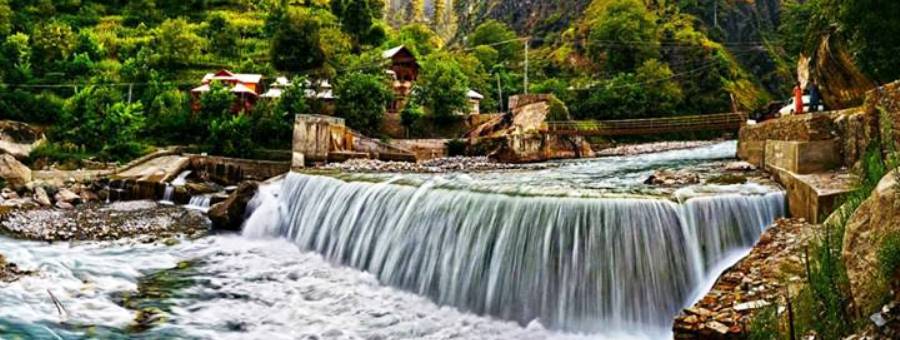Pakistan
Monument
The Pakistan Monument is a national landmark and
legacy gallery situated on the Shakarparian Hills in Islamabad, Pakistan,
planned to symbolize national solidarity. The unpredictable spreads a range of
2.8 hectares and is a famous excursion destination.
 The landmark is formed
as a blossoming bloom petalshaped structure with the internal dividers of the
petals recorded with the frameworks of Lahore Fortress, Badshahi Mosque, Khyber
Pass and Minare Pakistan. The landmark opens onto a marble patio giving a
bird'seye perspective of Islamabad City. The four fundamental petals of the
landmark speak to the four regions (Balochistan, KhyberPakhtunkhwa, Punjab, and
Sindh), while the three littler petals speak to the three regions
(GilgitBaltistan, Azad Kashmir and the Tribal Areas). The bordering Pakistan
Monument Museum incorporates a wax historical center portraying critical
occasions prompting to the Pakistan Movement.
The landmark is formed
as a blossoming bloom petalshaped structure with the internal dividers of the
petals recorded with the frameworks of Lahore Fortress, Badshahi Mosque, Khyber
Pass and Minare Pakistan. The landmark opens onto a marble patio giving a
bird'seye perspective of Islamabad City. The four fundamental petals of the
landmark speak to the four regions (Balochistan, KhyberPakhtunkhwa, Punjab, and
Sindh), while the three littler petals speak to the three regions
(GilgitBaltistan, Azad Kashmir and the Tribal Areas). The bordering Pakistan
Monument Museum incorporates a wax historical center portraying critical
occasions prompting to the Pakistan Movement. Besides, the offices incorporates
a reference library, varying media document, gathering corridor alongside a
62 seat limit theater known as Panorama Hall.[4] The complex gets all things
considered got 1500 sightseers for every day totalling at 0.57 million guests
in 2015. From air the landmark resembles a star (focus) and a bow moon
(framed by dividers shaping the petals), these speak to the star and bow on
Pakistan's flag. During the underlying stages the arrangement was imagined
and began by Uxi Mufti child of Mumtaz Mufti in 2005 later the arrangement
to assemble a national landmark in the capital city of Pakistan was embraced by
the Ministry of Culture which was under Hamad Kashif around then. In this
regard, Pakistan Council of Architects and Town Planners (PCATP) composed a
national rivalry around the subject of meaning quality, solidarity and
commitment of the general population of Pakistan into a symbol speaking to an autonomous
and free nation.[8] From a sum of twenty entries, three were shortlisted. At
long last, the outline proposed by Arif Masoud was chosen for development, that
spun around the creation and improvement of the nation. The cost of the complex
was Rs600 million.
Besides, the offices incorporates
a reference library, varying media document, gathering corridor alongside a
62 seat limit theater known as Panorama Hall.[4] The complex gets all things
considered got 1500 sightseers for every day totalling at 0.57 million guests
in 2015. From air the landmark resembles a star (focus) and a bow moon
(framed by dividers shaping the petals), these speak to the star and bow on
Pakistan's flag. During the underlying stages the arrangement was imagined
and began by Uxi Mufti child of Mumtaz Mufti in 2005 later the arrangement
to assemble a national landmark in the capital city of Pakistan was embraced by
the Ministry of Culture which was under Hamad Kashif around then. In this
regard, Pakistan Council of Architects and Town Planners (PCATP) composed a
national rivalry around the subject of meaning quality, solidarity and
commitment of the general population of Pakistan into a symbol speaking to an autonomous
and free nation.[8] From a sum of twenty entries, three were shortlisted. At
long last, the outline proposed by Arif Masoud was chosen for development, that
spun around the creation and improvement of the nation. The cost of the complex
was Rs600 million.
Conception:
Amid the underlying stages the arrangement was
imagined and began by Uxi Mufti child of Mumtaz Mufti in 2005 later the
arrangement to manufacture a national landmark in the capital city of Pakistan
was embraced by the Ministry of Culture which was under Hamad Kashif around
then. In this regard, Pakistan Council of Architects and Town Planners (PCATP)
sorted out a national rivalry around the topic of meaning quality, solidarity
and devotion of the general population of Pakistan into a symbol speaking to an
autonomous and free nation.From an aggregate of twenty entries, three were
short-recorded. At last, the plan proposed by Arif Masoud was chosen for
development, that spun around the creation and advancement of the nation. The
cost of the complex was Rs600 million.
Structure
The landmark is situated at the west perspective
of the Shakarparian Hills, and is spread over an aggregate zone of 2.8
hectares. The high area makes the landmark obvious from over the twin urban
areas of Islamabad and Rawalpindi. The establishment stone was laid on 25 May
2004 and the complex was finished before the end of 2006 for initiation on 23
March 2007. The aggregate cost brought about was more than Rs.580 million.
Central stage The structure contains four blooming blossom petals, worked of
stone, speaking to the solidarity of Pakistani individuals. The inward dividers
of the petals are brightened with murals.The floor was likewise comprised of
rock. The focal stage is made fit as a fiddle of a fivepointed star which is
encompassed by a water body. A metallic sickle encompassing the star is
recorded with expressions of Muhammad Ali Jinnah and verse of Allama Iqbal.




























